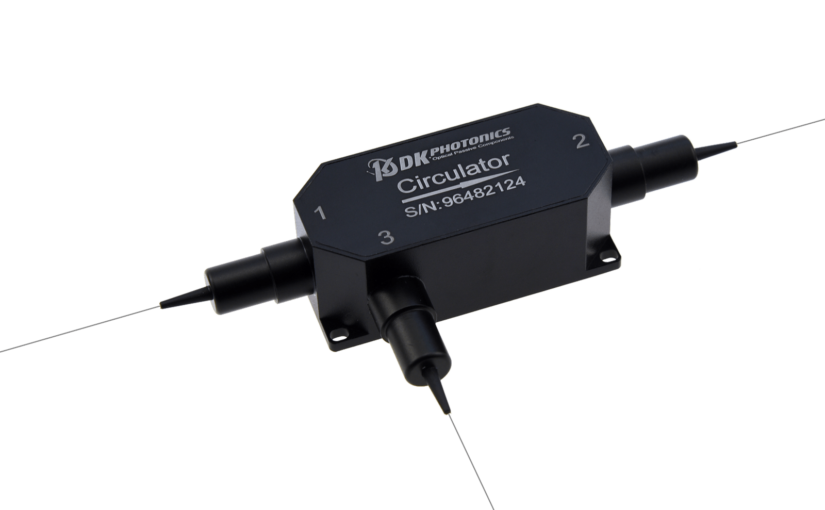An optical circulator is a passive multi-port optical component characterized by its non-reciprocal property. It works by keeping the reflected light from coming back to the source and allows this light to pass through the subsequent port, where this light is either absorbed or used. This component is designed in such a way that the light entering from any port exits from the next port. For instance, if light enters port 1, it passes through port 2 and the reflected light that tends to come back to port 1 does not come out of port 1, but instead, it exits from port 3.
This configuration, which is a form of passive circuit, allows the light to travel in a single direction around the loop while preventing the light from traveling back in the opposite direction. This means that signals are passed from one port to another while they are still being transmitted.
Why an optical circulator is called a non-reciprocal device?
Optical circulators are non-reciprocal optics, which means that changes in the properties of the light passing through the device are not reversed when the light passes through in the opposite direction.
When an optical signal is polarized by the Faraday effect, the polarization is not reciprocal. When an optical signal is input from any port, it can be output from the next port sequentially with very low loss, and the loss from this port to all other ports is very large; hence, these ports do not communicate with each other.
Since these ports do not communicate with each other, they can be used to create a passive star network.
What is an optical circulator used for? What are its applications?
Fiber optic circulators are primarily used to keep the incoming light from source and reflected that travel in opposite directions in an optical fiber separated. As a result, it can also help achieve bi-directional transmission through a single optical fiber.
Optical circulators are widely used in advanced communication systems and fiber-optic sensor applications because they have high isolation of the input and reflected optical powers and a low insertion loss.
How is an optical circulator formed?
A Faraday rotator is a device used to rotate the direction of linear polarization. A Faraday rotator is attached to two polarizing prisms on both sides.
When polarized light passes through a Faraday rotator, its polarization plane can rotate 45° under the action of an external magnetic field. As long as the optical axes of the two polarizing prisms are set at an appropriate angle to each other, the insertion loss of the optical paths can be very little and the isolation of non-connected path is very high.
An optical circulator can also be formed by utilizing the characteristics of single-mode fiber, which will produce the Faraday rotation effect under the action of an external magnetic field.
At DK Photonics, we offer a wide variety of optical circulators, including low-power and high-power circulators. Whether you are looking for 1064nm high power circulators or simple 980nm optical circulators, contact DK Photonics right away.
